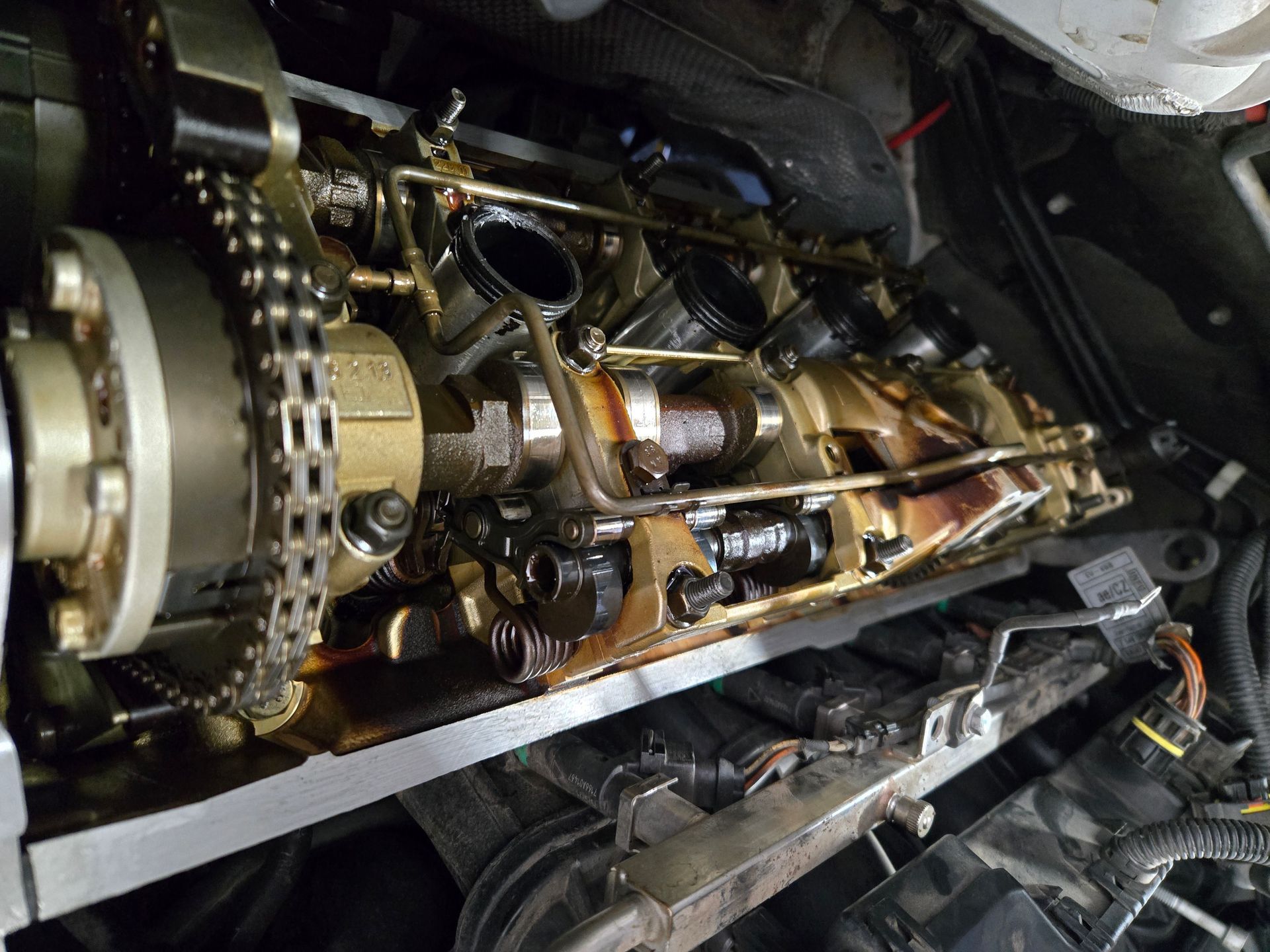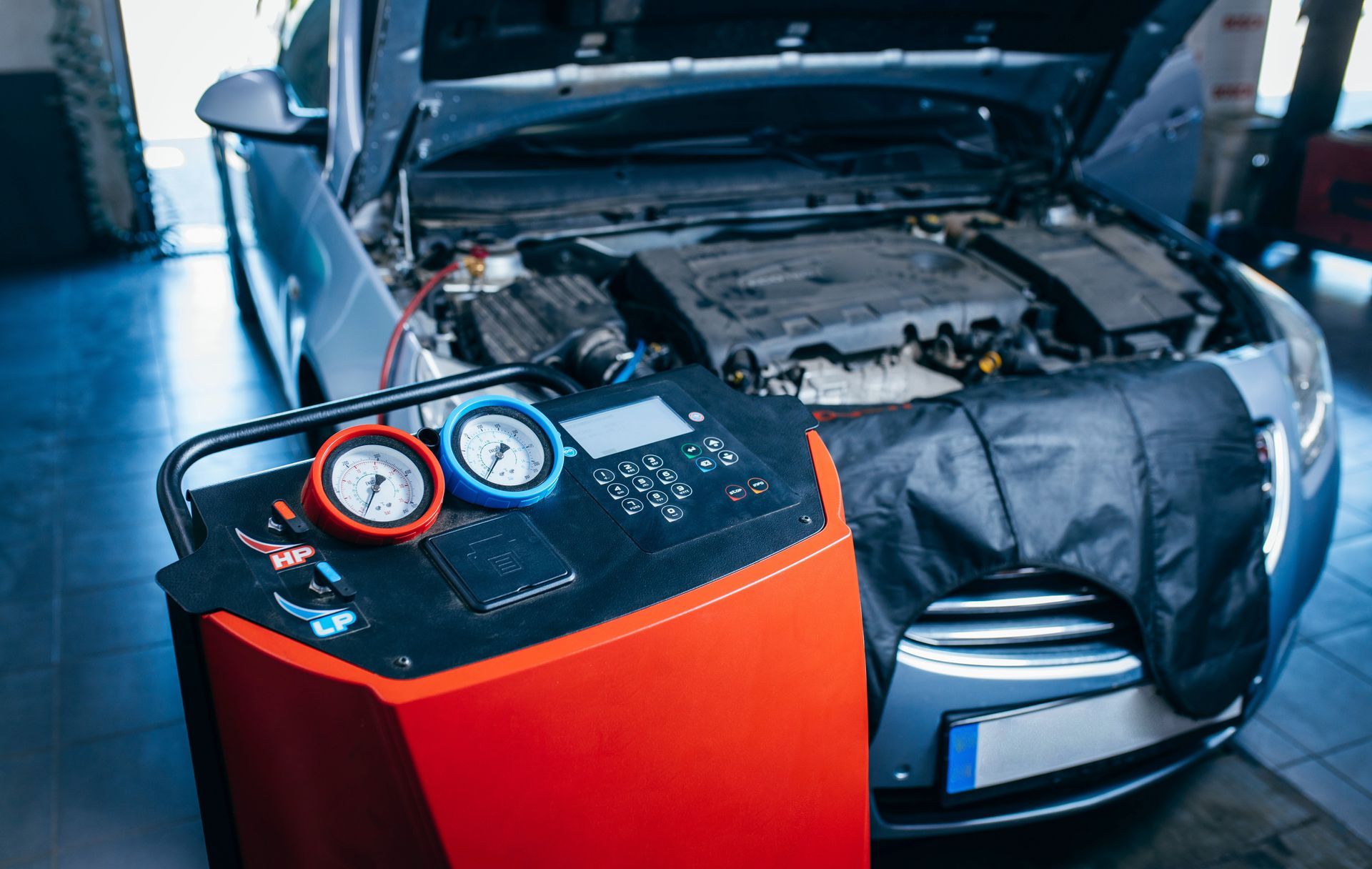Cooling System Woes 2015 Audi A3
Cooling System Woes
A Cautionary Tale of Delayed Repairs and Engine Damage 2015 Audi A3
We recently had a 2015 Audi A3 come into the shop that highlights just how important timely and thorough repair work can be, especially when it involves your engine’s cooling system.
THE BACK STORY
About two years ago, the customer noticed a coolant leak and took the vehicle to another shop. That shop eventually determined the repair needed was outside of their capabilities and referred the customer elsewhere. Unfortunately, the diagnosis process stretched on for nearly a year, and the vehicle sat at the original shop for another 10 months after that. Most recently, the diagnosis pointed to bent valves in the cylinder head.
DIAGNOSIS BY PEAK EURO
When the customer brought the Audi to us, Deven, one of our skilled technicians, jumped in to assess the situation. Here's what he uncovered:
- Cooling system leak confirmed: Using a pressure test, Deven pinpointed the leak at the upper radiator hose T.
- Further investigation: He removed the spark plugs and found cylinders 1 and 4 to be unusually clean, a potential sign of coolant entering the combustion chamber.
- Initial recommendation: Replace the faulty radiator hose and re-pressure test the cooling system to determine if the head gasket is leaking.

WHAT DEVEN FOUND NEXT
After replacing the radiator hose and re-testing the system, Deven confirmed the worst: the head gasket was leaking. Using a borescope, he visually confirmed coolant entering the combustion chamber, an issue with serious implications. But that wasn't all.
Deven also found deep scoring on the cylinder walls. This kind of damage is often the result of unburned fuel washing away the thin layer of oil that lubricates the cylinder walls, a condition known as “cylinder wash.” In this case, the head gasket leak caused a misfire. Misfiring leads to incomplete combustion, which allows raw fuel to remain in the cylinder. That unburned fuel then strips away oil from the cylinder walls, leaving the piston rings without proper lubrication. Over time, this results in scoring or even a washboard-like texture on the cylinder walls, damage that significantly compromises engine performance and longevity.
This is one of the key reasons it’s critical to address misfires immediately. Most vehicles are equipped with a check engine light that flashes during a misfire event. That flashing light is your car’s way of telling you the misfire is actively harming the engine and/or emissions components, and continued driving in this condition can cause irreversible damage, just like in this case.

THE PATH FORWARD: TWO OPTIONS
Given the extent of the damage and the mileage on the vehicle, here are the two options we presented to the customer:
Option 1: Repair the Existing Engine
- Remove the cylinder head and send it to a machine shop to check for cracks.
- Inspect the engine block for warping once the head is off.
- Note: Deep scoring on the cylinder walls may still lead to oil consumption issues, even after repair.
- Due to mileage, timing chains would also be due for replacement.
Option 2: Replace the Engine
- Install a used engine with similar mileage.
- Ideally, source an engine that already has new timing chains and a functioning cylinder head.
- This option could offer a more reliable and cost-effective long-term solution.
THE FINAL DECISION
After reviewing both options, the customer chose to move forward with replacing the engine. With a used engine that includes new timing chains and a healthy cylinder head, they now have a more dependable setup and peace of mind for the road ahead.
To summarize, the leaking head gasket was responsible for the misfire, which then allowed unburned fuel to strip oil from the cylinder walls. Without proper lubrication for the piston rings, this leads to scoring or washboarding of the cylinder walls. This is why it's crucial to address misfires promptly. When a vehicle’s check engine light flashes during a misfire, it serves as a warning that the engine or emissions components are being damaged due to the issue the engine control module (ECM) is detecting.
THE ENGINE REPLACEMENT PROCESS
Step 1: Getting Prepped & Tearing Down
Before anything comes out, the vehicle is secured and the battery is safely disconnected. From there:
- All essential fluids; engine oil, coolant, and transmission fluid, are drained.
- We remove the front bumper, grille, and radiator assembly to clear the way for engine removal.
Step 2: Engine Extraction
With access cleared, we begin detaching the heart of the car:
- Electrical connections and the engine wiring harness are disconnected and carefully labeled for an error-free reinstall.
- Major components like the intake manifold, exhaust system, and turbochargers are removed.
- Once free, the engine is hoisted out of the bay with care.
Step 3: Parts Transfer & Prep Work
- Not every component needs to be replaced; some just need a little TLC:
- Reusable parts such as the alternator, starter, and A/C compressor are cleaned and inspected.
- Sensors, brackets, and pulleys are transferred from the old engine to the replacement unit.
- A fresh timing chain kit is installed, and all worn gaskets and seals are replaced to ensure long-term reliability
Step 4: Dropping In the Replacement Engine
Now comes the exciting part, installation:
- The replacement engine is positioned in the bay and secured with brand-new engine mounts.
- All systems electrical, intake/exhaust, and fluid lines, are reconnected with precision.
- Fresh fluids and filters are added, and the system is thoroughly bled to eliminate air pockets.
Step 5: Testing, Tuning & Final Checks
Before handing back the keys, we make sure everything is dialed in:
- A full diagnostic scan is performed, and any stored fault codes are cleared.
- The engine is started and monitored closely for leaks, odd noises, or irregular behavior.
- Finally, we take it out on the road to ensure it performs smoothly in real-world conditions.
This case with the 2015 Audi A3 is a perfect reminder of the critical importance of timely repairs, especially when it comes to something as essential as the engine's cooling system. What started as a small coolant leak turned into a much more significant issue, ultimately requiring an engine replacement to ensure the vehicle's long-term reliability and performance. By catching the problem early and taking swift action, we were able to provide the customer with a cost-effective, dependable solution.
If you're experiencing any issues with your vehicle, whether it's a cooling system leak, misfire, or anything else, don’t wait too long to get it checked out. Prompt attention can prevent further damage and save you from more expensive repairs down the road.
At Peak Euro, we’re here to ensure your car gets the expert care it deserves, so you can drive with confidence.












